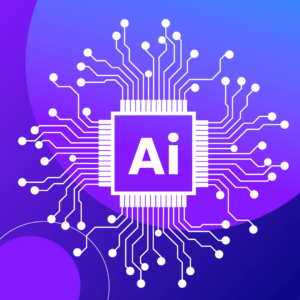The phrase, “The only constant is change” is often attributed to the Greek Philosopher Heraclitus, who lived around 535 BCE. The noted historian and author Yuval Noah Harari expands on this idea, noting, “Studying history means gaining a perspective on the forces that shaped the human experience over time. It’s not about memorizing dates and events; it’s about understanding how and why things change.”
You would be hard pressed to find an industry that has gone through as much change as B2B Marketing has over the last 15 years. 2025 will be no different. If anything, the stage is set for accelerated change, based on a series of demographic, behavioral and technological trends that are coming together to drive massive changes in B2B Buying and in turn B2B Marketing.
To paraphrase Harari, if studying history means studying change, let’s look at the forces of change in B2B Marketing over the last 15 years to see how they shape our understanding of what’s to come in 2025 and beyond.
The B2B Buyer Has Changed
The average age of B2B buyers has decreased over the last 15 years, with Millennials and Generation Z now constituting the largest portion of the B2B purchasing demographic. In 2024, Forrester reported that Millennials (born after 1980) and Gen Zer’s (born after 1997) made up 71% of B2B Buyers, up from 64% in 2022.
This generational shift has influenced B2B purchasing behaviors, with younger buyers favoring digital self-serve channels. Forrester predicts that by 2025, more than half of large B2B transactions ($1m or greater) will be processed through digital channels, including vendors websites or marketplaces. Millennials are now the largest B2B tech buying group, comprising 59% of B2B Buyers, with 30% serving as lead buyers for their organizations. This demographic transition underscores the growing importance of digital engagement strategies tailored to the preferences of today’s digital first buyer.
The B2B Buying Process Has Changed
The number of buyers involved in the average B2B purchase process has increased 2-3X over the last 15 years. Back then, the average buying group was 3-5 decision makers. Today, studies by Forrester and Gartner show that number has grown to 6 to 10 stakeholders, and in complex purchases like enterprise technology, it is double that with up to 22 members in a buying group.
This shift has been driven by 3 main factors:
- The increased complexity of solutions. As B2B products and services have become much more integrated and strategic, they require input from diverse teams like IT, finance, operations and legal.
- Risk mitigation. Organizations are looking to drive consensus among various stakeholders to reduce risks associated with high-value purchases.
- Cross-functional buying. Digital transformation initiatives often require collaboration across departments, amplifying the number of involved decision-makers. This expanded buyer dynamic makes it crucial for marketers and sales teams to align their messaging with the needs and concerns of diverse stakeholders.
Technology Has Changed B2B Purchasing.
Technology has fundamentally reshaped the B2B purchase process driving changes in buyer behavior, decision-making dynamics, and vendor engagement strategies. There are 3 main technological shifts that have driven the changes in the B2B buying process:
- Empowered buyers with access to information. Buyers used to rely primarily on sales reps for product information and differentiation. Today buyers can independently research solutions, compare vendors, and read reviews online. Forrester’s latest research shows that B2B buyers are upwards of 80% through their buying process before engaging with a sales rep.
- B2B marketing used to be dominated by trade shows, print publications and direct sales efforts. Today digital channels like social media, search engines, content syndication and programmatic advertising drive engagement, with B2B marketers creating tailored content to educate and guide buyers through their purchase process.
- The role of predictive analytics. Lead qualification used to be manual and subjective, often relying on gut instinct rather than data. Today, AI-powered tools analyze buyer signals to help predict purchase likelihood and enable sellers to engage prospects at the right moment.
Now, armed with this historical snapshot of changes reshaping the industry, let’s get to what’s in store for B2B Marketing over the next 12 months:
1. All Marketing Becomes Performance Marketing.
We believe that 2025 is the year that B2B marketers realize that all marketing is performance marketing today. This means that B2B Marketing takes the next step from supporting revenue and sales to driving revenue and sales. While this is not a new concept, if we’re honest, our industry still has a long way to go in organizing and optimizing marketing for the digital-first world (and purchase process) we live in today. We anticipate a related shift in KPI’s and the Metrics that Matter for marketers. For years B2B marketers have tracked metrics that help justify marketing. Today it’s essential that marketers track metrics that allow them to do better, more impactful, performance-driven marketing.
2. The Convergence of Brand and Demand Marketing
For years B2B brand and demand marketing have been siloed, with limited alignment between building brand awareness and generating leads. Today, technology has blurred those lines, as buyers simultaneously evaluate brand trust and solution fit. Converging brand and demand strategies is critical to vendors being shortlisted today.
3. The Rise of Performance-Driven Content
We anticipate a wholesale shift in the way B2B content is created and managed, with data playing a far more prominent role in the creation and optimization process. We also anticipate that the shift to performance-driven content will accelerate the creation and customization of content that can work across multiple channels, including content syndication, display, video, audio and OOT. Performance-driven content is the key to aligning marketing with business objectives to ensure that resources are being used effectively and efficiently. It helps to bridge the gap between brand building and demand generation, which is particularly critical in B2B environments where the buyer’s journey is complex and multi-touch.
As always, we’d love to hear your thoughts. What trends do you see reshaping the industry for 2025 and beyond? What changes in B2B Marketing do you think will have the biggest impact on your company and job over the next 12 months?




